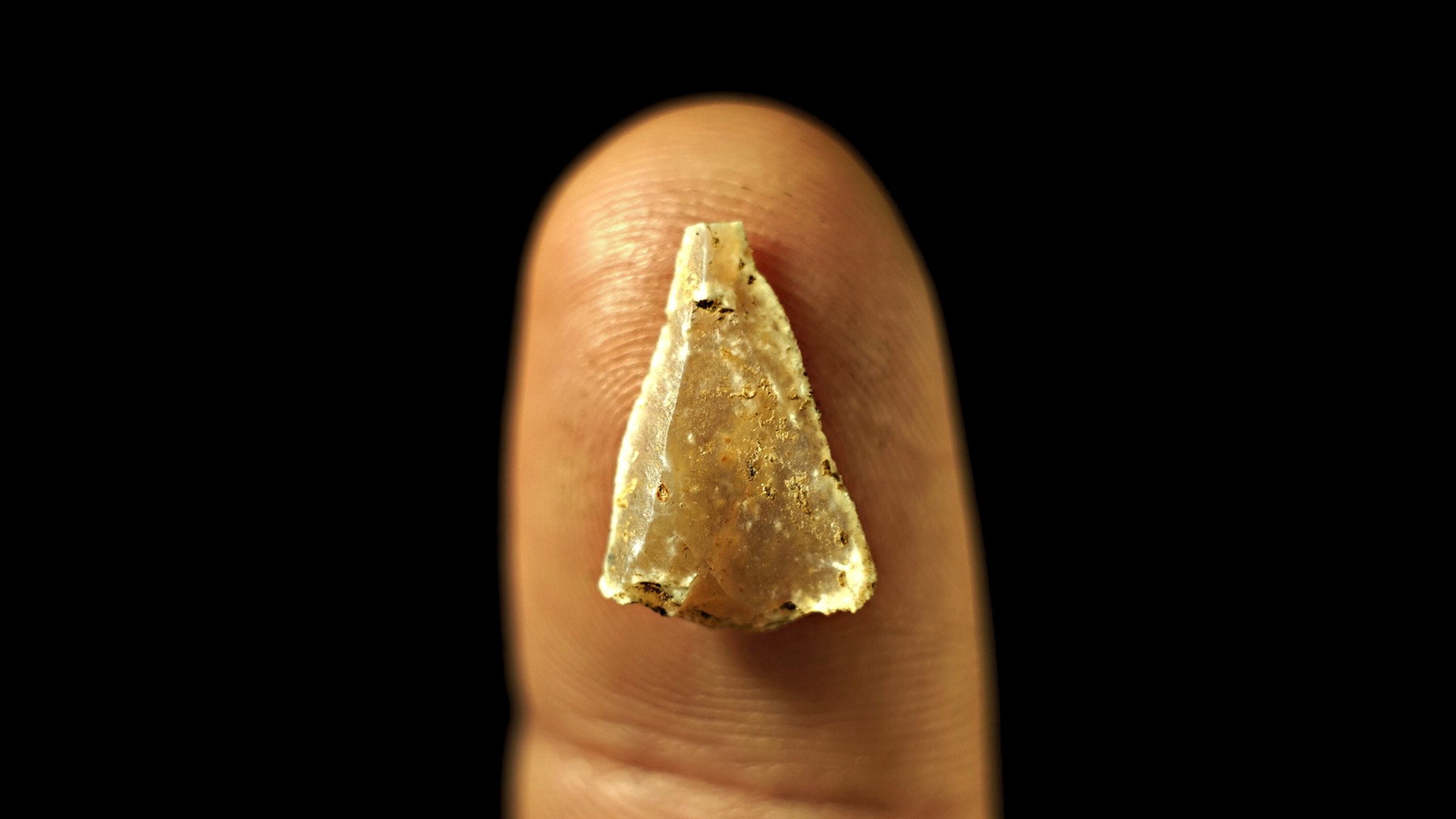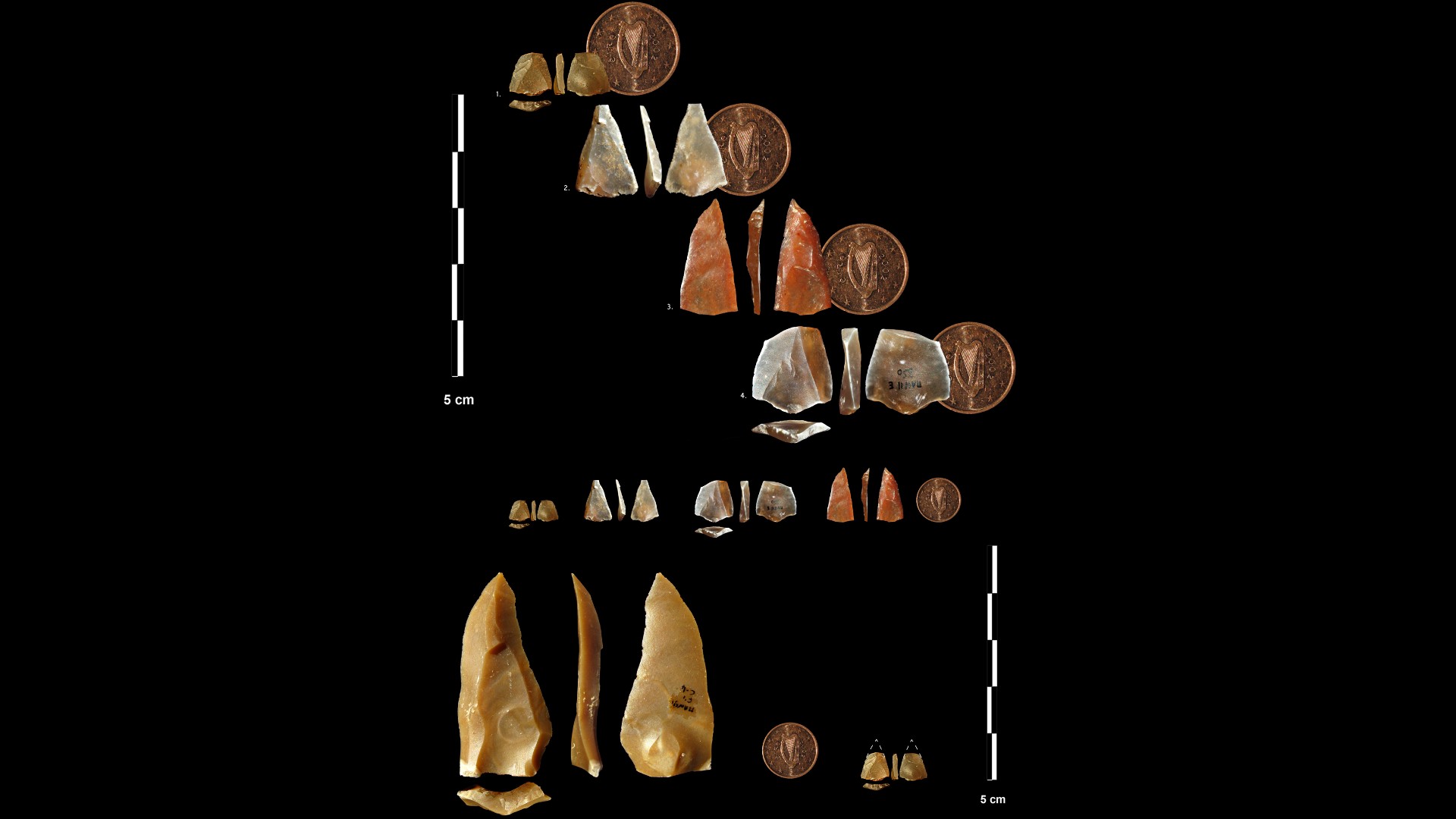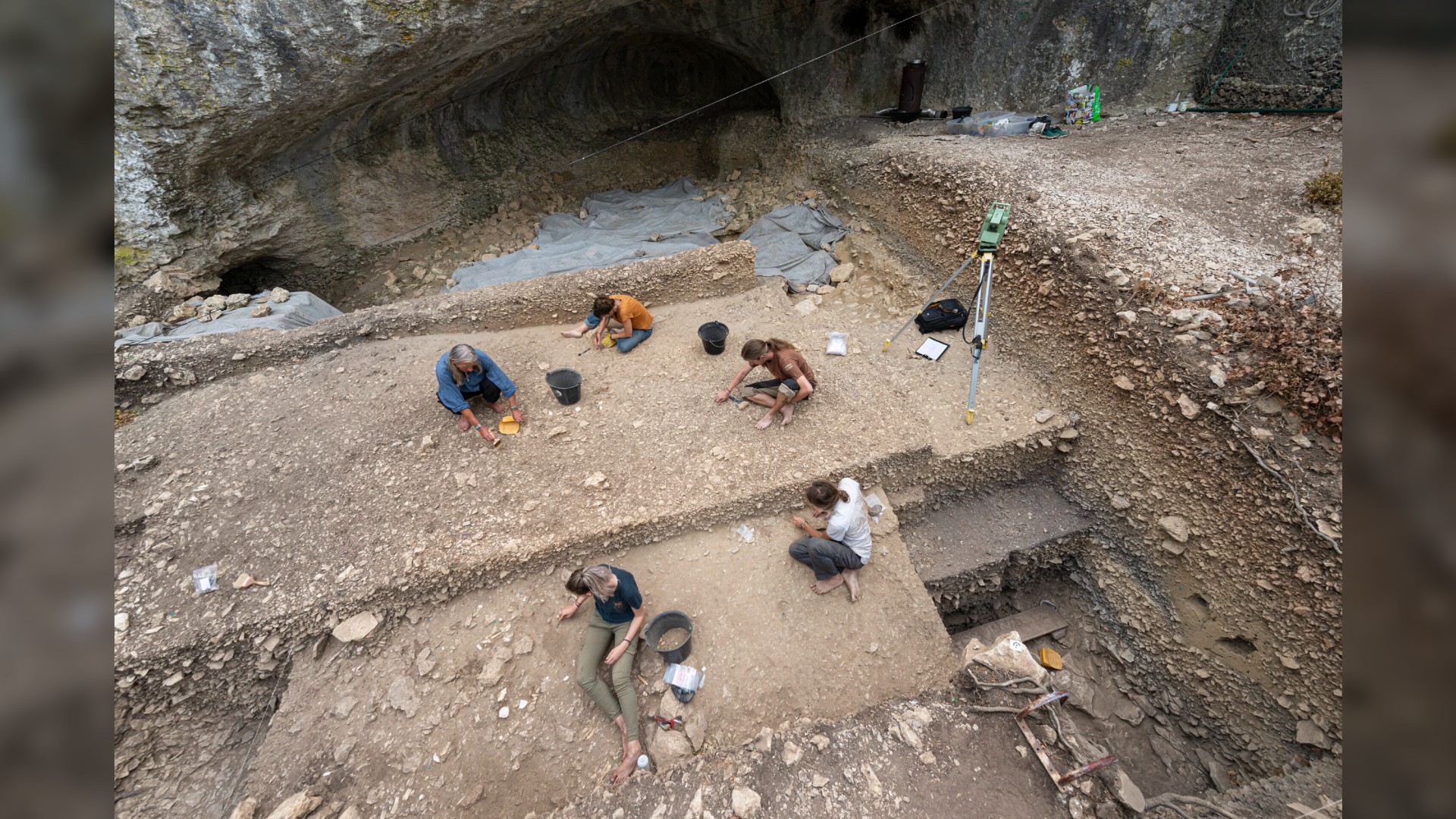54,000-year-old stone points are oldest evidence of bows and arrows in Europe
New evidence that bows and arrows were used by early modern humans in Europe 54,000 years ago has strengthened the idea that such projectile technology might have given early modern humans an edge over Neanderthals.
Ancient humans crafted bows and arrows in Europe as far back as 54,000 years ago, strengthening the idea that these weapons were instrumental in the spread of early modern humans throughout the continent, a new study finds.
Researchers found the telltale stone points in a rock shelter that was inhabited by early modern humans about 54,000 years ago in what is now southern France. Until now, 12,000-year-old wooden artifacts in Northern Europe were the earliest concrete evidence of bow-and-arrow technology on the continent.
The stone points are the earliest evidence in Europe for the use of bows and arrows by early modern humans and suggests that the technology may have given this human lineage an edge over the Neanderthals for hunting prey, the researchers propose in a paper published Feb. 22 in the journal Science Advances.
Meanwhile, there is no evidence that Neanderthals ever used bows and arrows (although they seem to have been adept at throwing spears). And that could be one of the reasons early modern humans ultimately supplanted the Neanderthals across Europe about 40,000 years ago, according to research led by scientists in France, including Laure Metz, an archaeologist at Aix-Marseille University, and Ludovic Slimak, a cultural anthropologist at the University of Toulouse-Jean.
Related: Weapons carved from human bone come from drowned land bridge between UK and Europe
"These technologies may have given modern humans a competitive advantage over local Neanderthal societies," the researchers wrote.
Stone arrowheads
In a study published in the journal Science Advances last year, many of the same researchers reported finding teeth and stone artifacts that showed early modern humans occupied the site between 56,700 and 51,700 years ago — pushing back the earliest known date of the arrival of early modern humans in Europe by about 10,000 years.
Get the world’s most fascinating discoveries delivered straight to your inbox.
The new study examined hundreds of stone artifacts from the same site and around the same age, many of which showed telltale signs of use as projectile weaponry, including more than 100 points that appear to be parts of arrowheads. Many were similar to arrowheads made by later Homo sapiens, and some had fractures and other damage at their tips that could have been created by an impact.
The researchers also made replica points from stone found near the rock shelter and fashioned them into arrows, darts for atlatls (spear-throwers), and spears, which they then used to shoot at or stab dead goats to simulate hunting prey. They found that some of the larger points could have been effective with spears but that the smallest points wouldn't have been damaging enough without the force from a bow and arrow.
Ancient advantage?
The stone and bone points found in the rock shelter at Grotte Mandrin in the Rhône River valley aren't the oldest evidence for bows and arrows anywhere, however; supposed arrowheads, also associated with early modern humans, found in South Africa are more than 70,000 years old.
But the evidence from Grotte Mandrin indicates that early modern humans were proficient with bows and arrows at the very earliest stage of their incursion into Europe, contrary to the proposal by some archaeologists that they mastered this technology only after they had supplanted the Neanderthals. For instance, some archaeologists have argued that the small points found at the earliest South African sites were created during the process of making spears and may not be evidence of early arrows.
The new study suggests that the use of bows, arrows and atlatls might have been a critical advantage for modern humans as they expanded across Europe and eventually replaced the Neanderthals.
"The use of these advanced technologies may be of crucial importance in the understanding of the remarkable expansion of the modern populations," they wrote.
According to a report in Nature magazine, Grotte Mandrin also contains the bones of horses, and the researchers think early modern humans may have hunted these and bison migrating through the Rhône River valley.
Tom Metcalfe is a freelance journalist and regular Live Science contributor who is based in London in the United Kingdom. Tom writes mainly about science, space, archaeology, the Earth and the oceans. He has also written for the BBC, NBC News, National Geographic, Scientific American, Air & Space, and many others.








